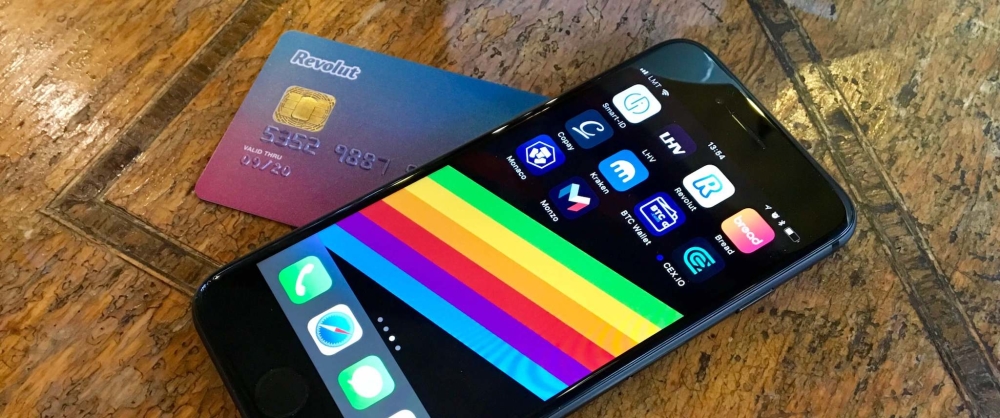The 'it' factor of today's digital banks
09 Mar 2018

A few weeks ago I received an update from Revolut, a payments service I use, about how their app now supports cryptocurrencies. Although I’ve been a customer of the brand for a little while, it hit me how much personal finance has been changing (and will continue to do so). Mobile has become our banking control centre, we’ve seen Bitcoin come out of its obscure, dark web-affiliated origins and grow into a globally-accepted form of currency. Since 2008 London has become the fintech capital of Europe, home to brands like Transferwise and Monzo.

At the start of this year we identified three key consumer trends defining the relationship between brands and their customers. Here’s what we can learn about how fintech brands approach customer engagement and better relationships with customers.
TRUST: Building trust is the first step to wooing customers
Getting people to believe that banks are acting in their best interests was the first step after the financial crisis. Brands like Atom Bank and Tandem began their lives as small groups of tech and financial services experts looking to make a difference. And today those messages are what first hit you when you visit their websites.


Transparency is of course linked to rates whether you’re taking out a mortgage product or opening a Fixed Saver deposit. Reassuring customers they are getting a good deal helps you win them over but then how do you retain them when you have to implement less popular rate changes?
Monzo, a full service UK bank account, has a Transparency page on their website. In addition to listing things like their Investment Ethics and Internal Transparency policies they add a form at the bottom inviting users to offer feedback and their own ideas.
Fostering a sense of community has been key to Monzo’s growth. The first two points of Tearsheet’s article highlights this:
Having a look at their Community page you realise the efforts they’re taking to get their customers to take part in the shaping of the brand. In addition to an online forum, customers can pose ideas for meet-ups to Monzo and have them run as official brand events. Topics started by customers have ranged from a general discussion on fintech to ideas for new app features. And if you want to invest in the brand there’s an equity funding page for that as well.
EASE: Every single step needs to be user-friendly

Digital banking alternatives are built for the smartphone-age where consumers expect things to happen seamlessly and in real-time. Additionally, they do away with a lot of the fees we’ve become used to, e.g. overseas transaction and withdrawal fees. I joined Revolut because my current bank doesn’t offer me fee-free anything, so it was perfect. After downloading the app and verifying my ID I received a card within a week and could use it immediately.
Even though I’m used to Revolut now I was reminded of just how seamless everything had become during a trip last October. Whilst buying a last-minute gift in Hong Kong airport I handed my Revolut card to the cashier and realised I wasn’t sure I had enough funds on it. I quickly opened the app on my phone to check and with two taps made a top-up. And that was it – I proceeded to buy the item and was done. I mean…how great is that? I’m in East Asia and can magically summon money onto a piece of plastic via a phone.
Of course, this isn’t the only payments system to do this but the fact that consumers can now choose apps that make this possible in a simple and straightforward way is still pleasing to me. We no longer have to carefully plan out our finances in cash ahead of our trips. Personal finance is taken care of the moment you want to deal with.
EXCITE: Going above and beyond customer expectations
When Atom Bank launched in 2016 their use of facial recognition and enabling customers to personalise their apps were exciting enough.

However, technology moves quickly and traditional banks have long since introduced voice IDs and thumbprint scanning. When the gloss of facial recognition and designing your own logo wears off what can these digital services offer? Reverting back to our three macro trends for 2018, being able to excite customers encapsulates the element of surprise. Being told that I could now use Revolut to process my cryptocurrencies (not that I have any) showed me how the brand was exceeding my expectations and following on the heels of the latest thing to shake up finance – blockchain.
Going above and beyond expectations, another aspect of the EXCITE trend is delivering round the clock customer service. While consumers are drawn to the possibilities tech can offer them, knowing there’s continual support on the other side in case anything goes wrong can’t be underestimated. Sadly, Revolut’s chatbot needs work and I do wish it was easier to speak to a human just in case. Good customer service is one of the reasons I still stick with my current bank – I can rely on them 24/7, they answer the phone within 10 seconds and they don’t sound like they want to kill me if I ring them up with a stupid question (I still don’t really understand credit cards).
So how can Financial Services brands deliver ‘Remarkable’ customer experiences in 2018 and beyond?
While digital banking is yet to go mainstream (it faces some considerable challenges) we can learn a lot from fintech brands in their current form:
- Build trust with your existing and future customers by giving them opportunities to share their voice and shape the brand.
- Keep delivering the tools to help them manage their personal finances as easily as possible.
- Use your customer service channels as a way to excite your customers and keep them feeling special.
-Kei Lawford, Futurologist, Table19

Please login to comment.
Comments